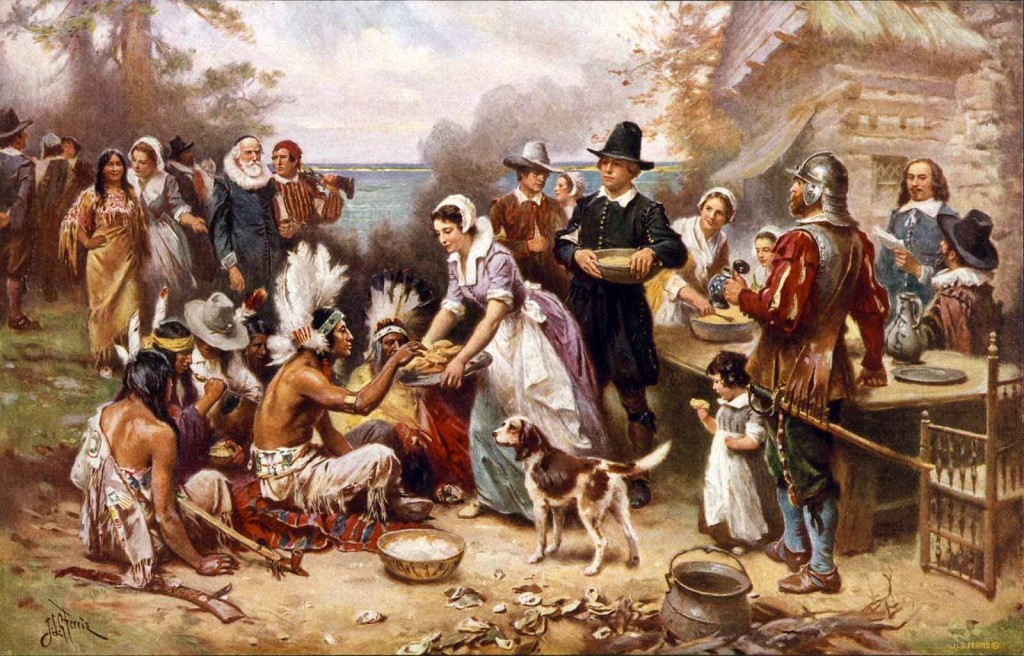Americans and Canadians celebrated on the fourth Thursday on November, festival is an acknowledgement of gratitude for a plentiful harvest. Nearly all cultures celebrate this festival. For instance Sri Lankans celebrate it as “Aluth Aurudu” in April, south Indians celebrate it as Pongal in the month of January, while the north Indians celebrate it as Holi in the month of March.
“The First Thanksgiving” (1915), by Jean Louis Gerome Ferris (American painter, 1863-1930)
The American act of thanksgiving began during the early pioneer days almost four hundred years ago.
In 1620, one hundred people sailed across the Atlantic Ocean to land at Plymouth, Massachusetts, in America. However, their first winter was severe and their crops failed in the new climate and unfamiliar soil. Half of them died due to lack of fresh food.
The few who survived were saved as Native Americans of the Iroquois tribe taught them how to grow corn (maize) and other crops, all of which were new food for the settlers.
In the next autumn (fall season), 1621, bountiful crops of corn, barley, beans and pumpkins were harvested. The settlers had much to be thankful for, so a feast was planned. They invited the Iroquois chief and his tribe for this feast. The Indians brought turkeys and other wild game for the settlers. And the feast consisted of cranberries, corn turkey and deer, along with dishes taught by the Indians.
Each year, the settlers decided to celebrate the autumn harvest with a feast of thanks. In 1776, after the U.S. became independent, the government recommended that a thanksgiving day be held to celebrate the occasion.
President George Washington suggested November 26 as Thanksgiving Day. In 1863, the date was shifted by President Abraham Lincoln to the last Thursday in November as a day of thanksgiving. The date was again shifted in 1939 by President Franklin D. Roosevelt to the fourth Thursday of November to lengthen the shopping period before Christmas.
However, Thanksgiving falls on a different date each year and the President must proclaim that date as the official celebration.
The thanksgiving feast apart from showing gratitude for a good harvest is in fact a feast planned to thank the Native Americans for teaching the settlers how to grow and cook food.
However, by the eighteenth century, the festival lost its initial relevance as these very settlers instead of showing gratitude aplenty to the Native Americans, systematically killed the buffalo and nearly drove it into extinction; and through deceit took over the land, and treacherously decimated the Native American tribes.
Without the Native Americans the early settlers would not have survived and the United States, as it is today would not have existed !
Today, thanksgiving is a festival of family reunion. Family members gather for a reunion to give thanks for the good things that they have. A thanksgiving feast thus consisted of cranberry, roast turkey and corn, the same food that was eaten at the first thanksgiving in 1621!

